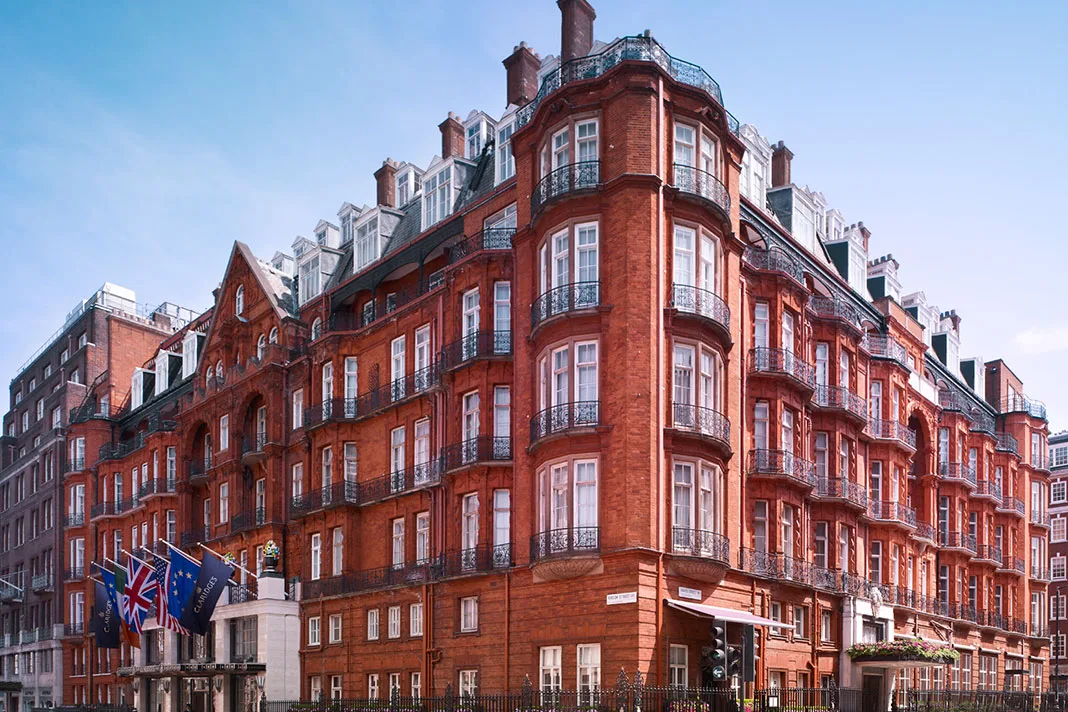1812: The Beginning
In 1812, James Mivart established a hotel at 51 Brook Street, London. Unlike typical hotels of the era, Mivart's hotel catered to guests looking for longer stays in the city. Apartments were rented by the month, providing a home-like experience for visitors.
1817: Expansion
As Mivart's venture prospered, he sought to expand. By 1817, he had acquired an additional property at 57 Brook Street to accommodate the growing number of guests.
1838: Major Development
By 1838, Mivart had purchased a row of five consecutive houses. He unified these properties, transforming them into one extensive hotel, enhancing its capacity and appeal.
1851: The Great Exhibition
The Great Exhibition of 1851 brought an influx of international visitors to London. Among them were distinguished guests like the Grand Duke Alexander of Russia and King William III of the Netherlands, who made Mivart’s their residence during their stay.
1854: The Claridge Era Begins
Number 49 Brook Street had been operated separately as a hotel by William and Marianne Claridge. In 1854, they acquired Mivart's establishment. From 1854 to 1856, the hotel operated under the name “Claridge’s, late Mivart’s” until Mivart's death, after which it was known simply as Claridge’s. The hotel continued to attract British and foreign aristocracy, including Queen Victoria and Prince Albert.
1860: Imperial Winter Residence
In 1860, Empress Eugènie of France chose Claridge’s as her winter residence, solidifying its reputation among European royalty.
1874: Royal Visits
On August 25, 1874, the Prince of Wales visited the Empress of Austria at Claridge's. This marked the beginning of numerous visits by the Empress, who returned in 1876, 1878, 1880, and 1888, often accompanied by her family.
1881: Change of Ownership
By 1881, William Claridge’s health had deteriorated, prompting the sale of the hotel to a consortium. The new owners struggled to maintain its prestige as newer, more modern hotels with amenities like electricity, lifts, and en-suite bathrooms began to emerge.
1890s: Financial Challenges
During the 1890s, the consortium proposed building a new hotel on the site. However, financial constraints prevented this development.
1893: A New Vision
In 1893, Richard D’Oyly Carte, known for creating The Savoy, purchased Claridge’s. He closed the hotel and demolished the existing buildings.
1898: Rebirth of Claridge’s
By November 1898, a brand-new hotel designed by C.W. Stephens opened on the site. D’Oyly Carte replicated successful elements from The Savoy, including modern amenities and long-term apartment rentals.
Post-World War I: Aristocratic Refuge
After World War I, many aristocrats, unable to maintain their London houses, found Claridge’s an ideal alternative. Renting suites for the London Season became a practical and economical choice.
1920s: Art Deco Influence
In the 1920s, parts of the hotel were redecorated by Basil Ionides to reflect the burgeoning art deco style. Concurrently, the Duke of Westminster sold the freehold of the site, leading to the construction of a new block adjacent to Stephen’s original design.
World War II: A Haven
During World War II, Claridge’s remained unscathed by bombing and continued to be a social hub. In the early 1940s, the Grill Room became Claridge’s Causerie, designed by Sir Howard Robertson. This innovative venue served smörgåsbord where guests only paid for drinks, a creative response to wartime rationing.
1941: Royal Refuge
Exiled royalty, including King Peter of Yugoslavia, took residence at Claridge’s. In 1945, Crown Prince Alexander of Yugoslavia was born in Suite 212.
Post-War Era: Statesmen's Retreat
After the war, Claridge’s became a favored spot for visiting statesmen, further cementing its status as a prestigious establishment.
1996: Modern Restoration
In 1996, Claridge’s undertook a significant restoration. Designer David Collins created a new cocktail bar, while Thierry Despont revitalized the Foyer area, drawing inspiration from 1930s archive photographs. A modern art deco style was infused throughout, highlighted by a Dale Chihuly chandelier.
Throughout its history, Claridge’s has continuously evolved, maintaining its status as a symbol of luxury and elegance in the heart of London.

